Performance Midrange Common Components
While AMD and Intel architectures differ in sockets and sometimes memory configurations, more is the same than not with the two systems. For that reason the Intel and AMD value midrange systems share a number of common components.
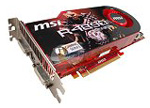 |
If you refer to the recent launch article on the ATI 4890 and NVIDIA GTX 275, you will find these two cards were initially the new choices for the $250 price point. Since then the very popular ATI 4890 has seen tremendous price competition among those selling the card. As a result, an overclocked 4890 can be had for $170 today after $30 rebate. While the GTX 275 performs similarly, it remains around the $250 selling price, with an occasional rebate pushing the price near $200. That is the reason the MSI 4890 OC is the video card choice for both performance midrange systems.
If you prefer NVIDIA cards or NVIDIA drivers, the GTX 275 is an easy substitute in either system. Either card will do the job well and you can shop based on price. The edge goes to the ATI 4890 in the resolutions you will likely run (1920x1200 or lower) with a 27" or smaller display. If you have a 30" monitor, the GTX 275 performs a bit better at those super high resolutions.
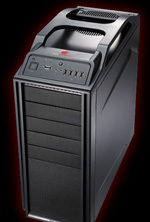 |
The case receives a significant upgrade with the selection of the unique Cooler Master Storm Scout mid-tower case. The Scout has many endearing features, but we would point out the unique rear cutout behind the CPU on the motherboard tray. That makes it possible to install many "through-the-board" aftermarket CPU heatsinks without removing the motherboard. It's a truly clever and useful design element, and we'd like to see more cases support such a feature. The top-mount handle and quiet, effective cooling are also big pluses. Some also want a unique appearance and the Storm Scout delivers with its red LED glow in a distinctive looking case.
Alternates are the Antec Nine Hundred at about the same price and the Antec 902 or Cooler Master Storm Sniper at $160. Both alternatives are very popular with system builders and buyers praise the build quality of both cases.
 |
AnandTech and many other review sites have praised the solid construction, performance, and value of Corsair power supplies. It should come as no surprise that the Corsair 750TX is the choice to power either performance midrange system. The power supply is SLI Ready and CrossFire Ready, 80 PLUS Certified, and Core i7 ready. Power is delivered to a single 60A 12V rail for those looking for that feature and finding it hard to come by at a reasonable price. With a $20 rebate the final cost is $100, which is a great value for a PSU with these specifications, features, and performance reputation.
Most of our editors consider the onboard audio of motherboards to be more than adequate for even gaming these days. That is why we have not chosen a sound card for the performance midrange system. If you want more than onboard surround sound then we recommend the Auzentech X-Fi Forte 7.1 for serious gaming at $140. HTPC users will find much to like in the ASUS Xonar HDAV 1.3 Slim. Other good choices are the ASUS Xonar Essence STX for music, in particular for serious headphone users, or the HT Omega Claro Halo - both run about $200. If you are looking for a good general purpose onboard audio upgrade the HT Omega Striker 7.1 should fit your needs at around $90.
 |
The optical drive for a performance midrange system needs the ability to play Blu-Ray disks. A new model was chosen here with the faster 8X BD read speeds, the LG CH08LS10 Blu-Ray/DVD combo drive. In addition to 8X BD and BD dual-layer playback, you can burn DVDs as fast as 16X single-layer or 12X DL. It cannot, however, burn 25GB/50GB Blu-Ray disks. Adding that capability increases the cost to around $200 to $250. BD burners like the $200 LITE-ON 4X BD-R SATA burner or the $230 LG GGW-H20LK 6X Blu-ray burner are good choices.
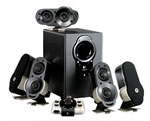 |
Speakers have been upgraded to the Logitech G51 155W RMS 5.1 surround sound speakers. The Logitech rebate has ended, but you can still find the G51 for as little as $120 if you shop, which makes the G51 an excellent value.
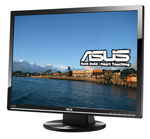 |
The LCD display resolution maintains the 1920 horizontal pixels of 1080p displays but moves to a 26" WUXGA display with a 1200 pixel height. Whatever the minor resolution differences the size of the monitor is increased to a nominal 26" so everything on screen is a little larger (0.292mm pixel pitch). The ASUS VW266H 25.5" HDMI widescreen provides the preferred HDMI input, as well as DVI and an analog VGA port. Panel speed is rated at an incredible 2ms, but we have found most current LCD panels perform similarly and the speed rating does not really guarantee very much. The ASUS monitor provides a large sharp image, good colors, and fast panel speed at a very good price of $300 after rebate. It comes with DVI and VGA cables, but if you plan to connect with HDMI you will need to buy an HDMI cable.
As most readers are aware, LCD panels have been going to cheaper panel technologies and generally declining in image quality. Despite that fact, most buyers are reporting that they are pleased with current LCD screens. It you have a need for exceptional color or yours is a mission-critical graphics task, you may want to look at the HP LP2475w 24" 1920x1200 monitor. This HP monitor is likely the best quality 24" monitor you can buy today, with superior panel technology (S-IPS) and image quality likely to satisfy graphics professionals.
The remaining components are the same as our value systems. The hard drive remains a 1TB WD. The Microsoft OEM keyboard and optical mouse provide input and Vista Home Premium OEM runs the system. For more information on these components you can refer to descriptions on p.3.
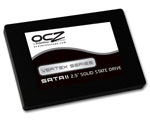 |
In response to those who have asked for SSD recommendations, it is possible to do so based on the months of research and testing performed on SSD drives at AnandTech. For more information on SSD test results please see our SSD Anthology and our SSD update. As we recently reported, you should be on the lookout for further price reductions expected in the next few weeks. The short summary is that the new Intel X25-M G2 SSDs are the top performers, but the price-reduced Indilinx options like the OCZ Vertex and OCZ Agility are viable competitors.










71 Comments
View All Comments
GuruX - Thursday, July 30, 2009 - link
The OCZ Blade 1150 2x2gb for the Intel value setup doesn't seem to be avalible in sweden. What would be a good replacement?Cepak - Saturday, August 1, 2009 - link
Any suggestions on a performance oriented mid-ranged system with a smaller form factor (mATX)? A system that can still accommodate all the goodies like the Phenom II x4 955 Black Edition, MSI Radeon HD 4890 1GB OC Edition, a ASUS VW266H Black 25.5" 2ms(GTG) HDMI Widescreen LCD Monitor, maybe with an external SATA port to connect the LG BD/HD DVD 8X BD read/16x DVD read/write via a external SATA case. It only need two internal SATA HDD bays. I don't care how the case appears because I'm going to tuck it out of sight (space is a premium for me).sebudes - Wednesday, July 29, 2009 - link
What'll be the benefits of stepping up one notch in the motherboard departement and go with DD3 memory and a "real" AM3 slot? As I understand it, right now there's litte, but will you be happy you did when maybe upgrading CPU or GPU in the future?glenster - Tuesday, July 28, 2009 - link
I've read the LG W2486L, which has been released, is a better monitor yet for less money. And the Silverstone Raven RV02 case has just been released (with a Fortress 2 on the way). Please write reviews of them.zshift - Tuesday, July 28, 2009 - link
I absolutely have to agree with choosing the Logitch X-540 speakers for the midrange. These speakers are amazing for the price. They also sound much better when paired with a good dedicated sound card (for all the nonbelievers out there, I used to think dedicated sound was stupid; then I tried a creative x-fi with these and I don't wanna go back to onboard. Sound is MUCH clearer). These speakers also get VERY loud If you want them to, past 50% volume and I can hear them clearly from outside my house. And the base is excellent, explosions in fps games have a nice deep feel to then, and crashes and engine revs in burnout are amazingly realistic.jpk - Monday, July 27, 2009 - link
I have that board and it takes DDR3 not DDR2 as stated in the write up. Funny, you can put an AM3 CPU in an AM2+ mobo but you can't put an AM2+ CPU in an AM3 board. Fabulous mobo by the way. Love mine.Wesley Fink - Tuesday, July 28, 2009 - link
Yes we still need an Edit function."The Gigabyte MA790XT-UD4P is indeed DDR3 memory, but when you drop the T in the name to Gigabyte MA790X-UD4P you are describing a Gigabyte motherboard that uses DDR2 memory."
just4U - Tuesday, July 28, 2009 - link
I've been recommending the MA790X-UD4P for two months now. It's a solid board that comes in at a attractive price point. One of Amd's strong points..Another consideration (since it seems Asus finally noticed..) is the ..Asus M4A78-E which either has come down alot in price or is a new release (not sure which). It's priced in line with the UD4P but comes with the 790GX chipset so onboard 3300 graphics.
Wesley Fink - Tuesday, July 28, 2009 - link
The information in the Buyers Guide is correct. The problem is there are two different Gigabyte motherboards with just one letter difference in the name. The Gigabyte MA790XT-UD4P is indeed DDR3 memory, but when you drop the T in the name to Gigabyte MA790X-UD4P you are describing a Gigabyte motherboard that uses DDR3 memory.This naming scheme has created more than a little confusion for buyers and reviewers.
vol7ron - Monday, July 27, 2009 - link
I'd like to start seeing numbers with these configurations; something to quantify the performance.Usual stuff:
FPS
Encoding Times
Super Pi
Load times
I know benchmarks are created for each individual component, but it'd be nice to see the synergistic effects and then make a decision on value per dollar.